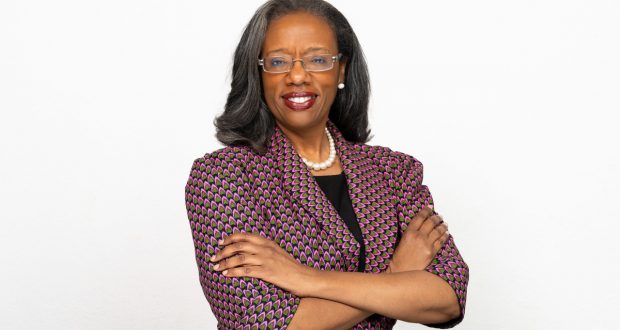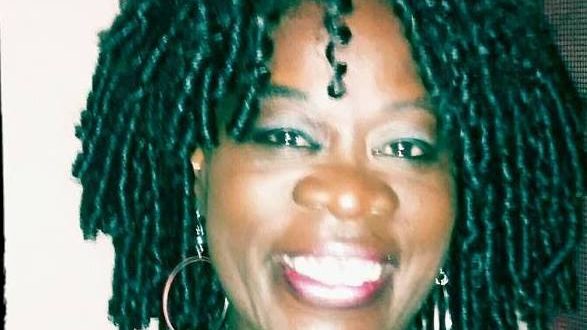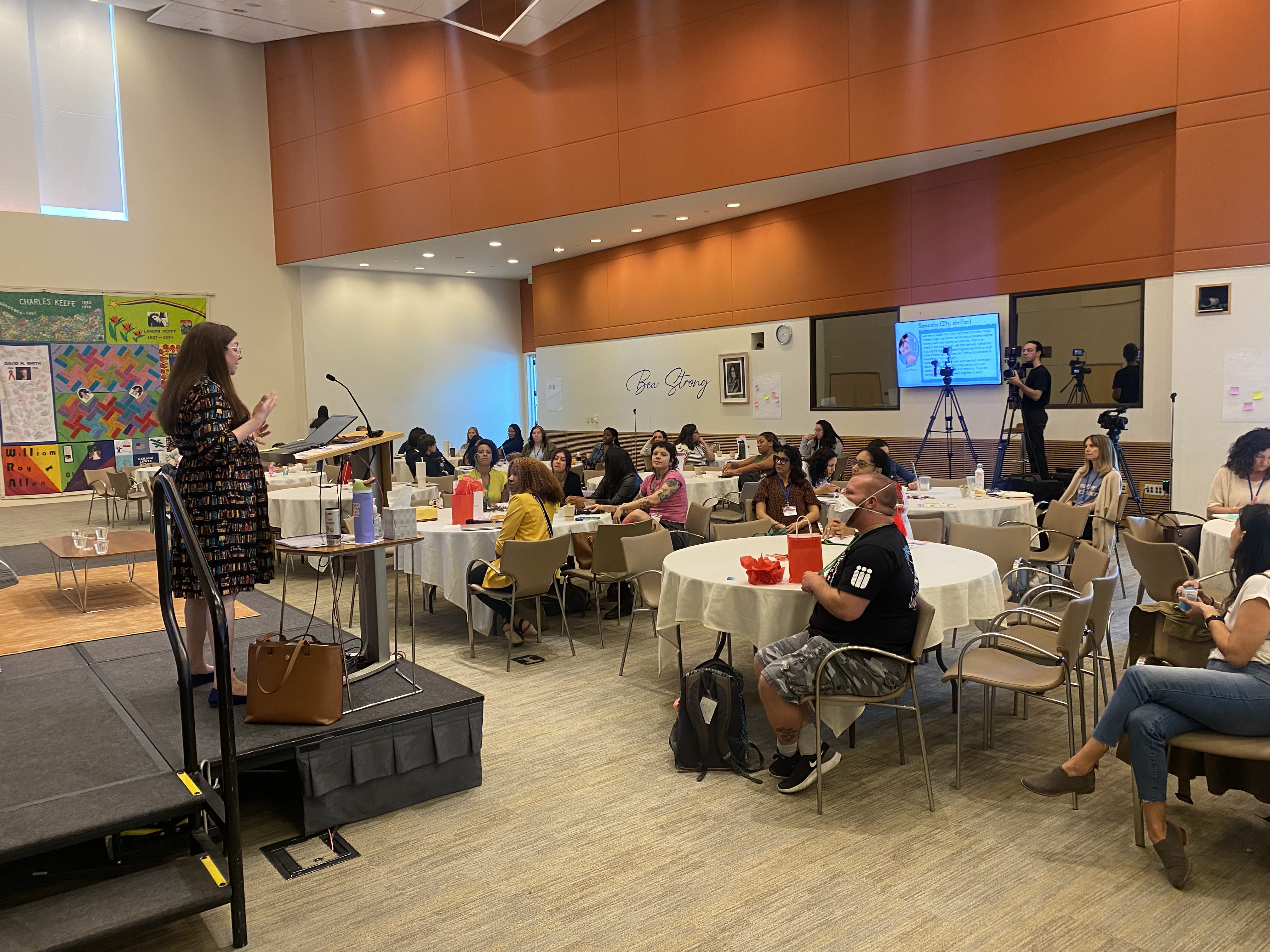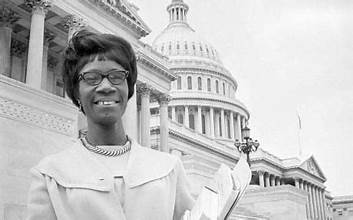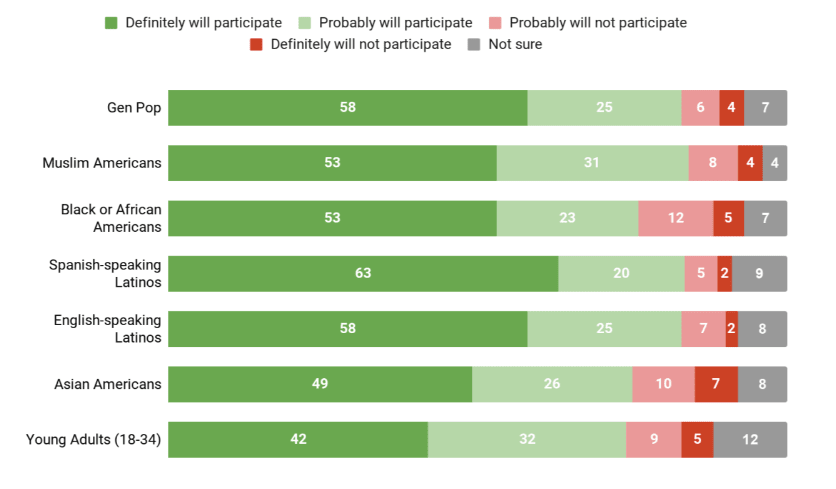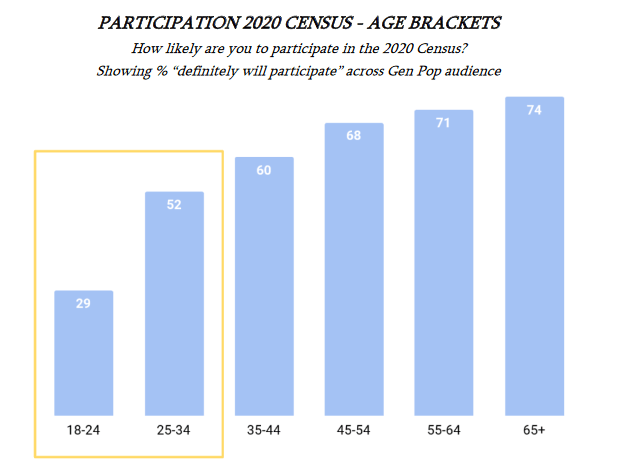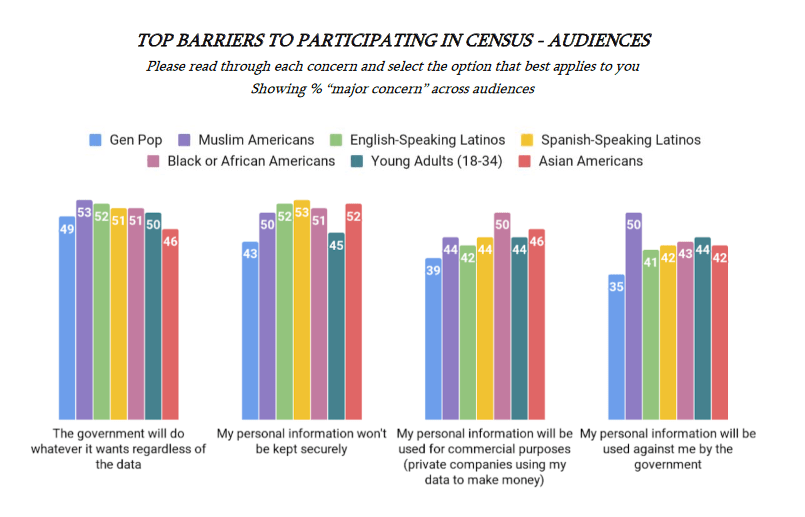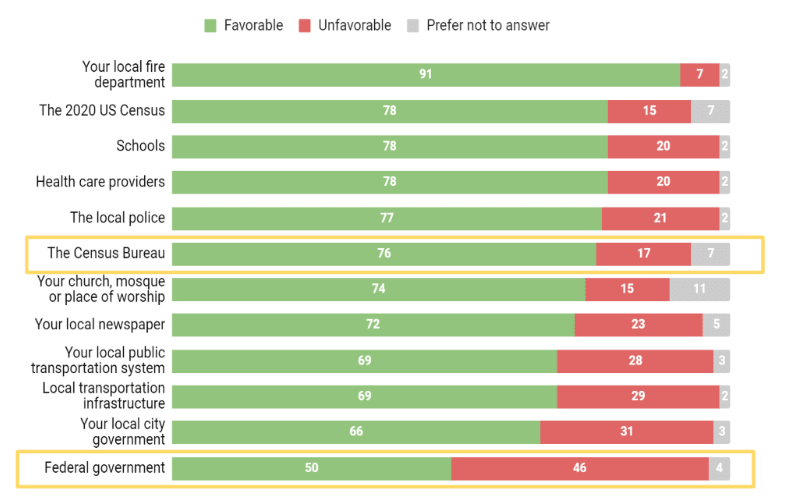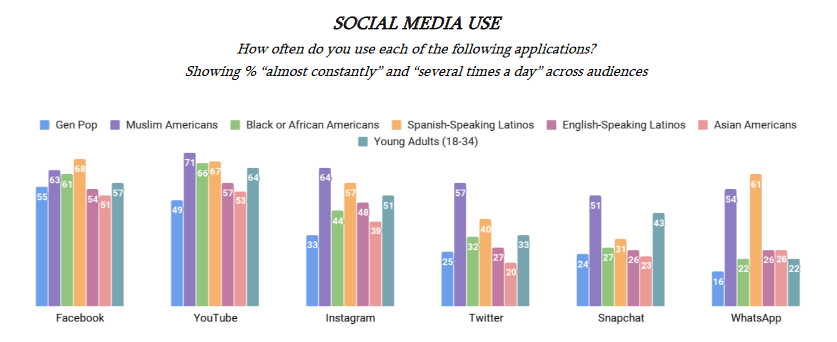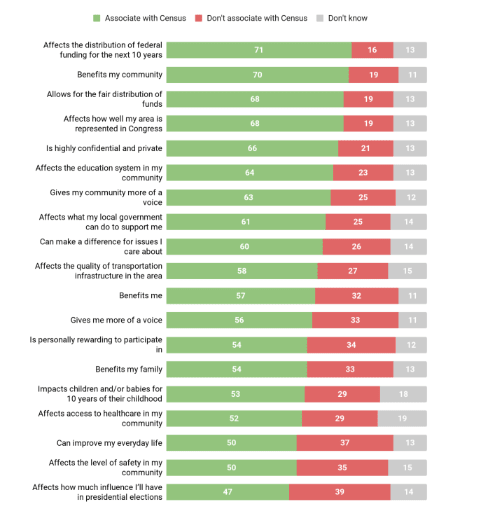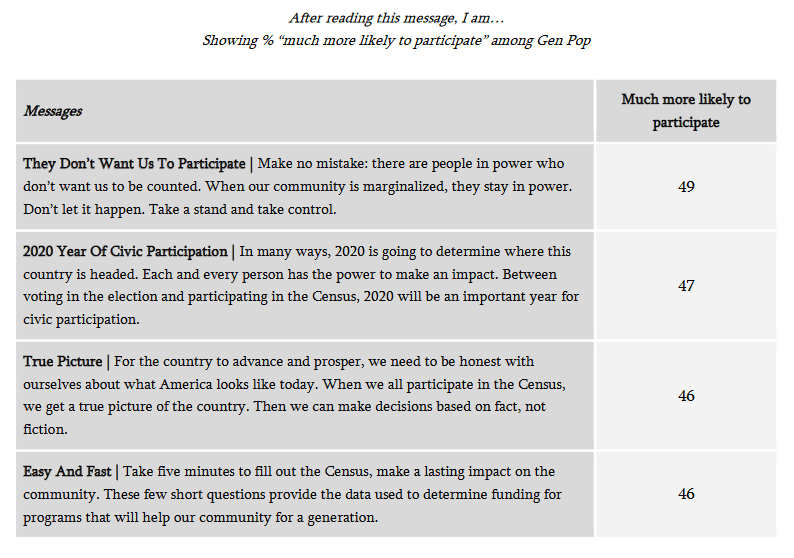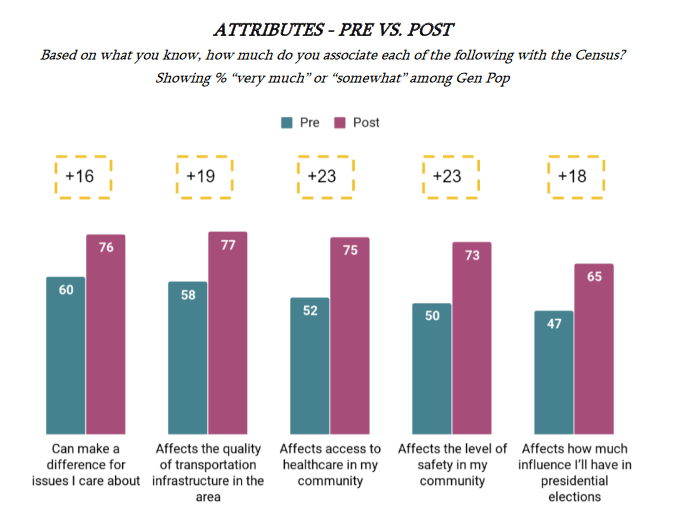By Charlene Muhammad | California Black Media
Even if you have people living with you who are not on your lease – or say your affordable housing application – you should still make sure they are counted during the 2020 Census, says Ditas Katague, director of the California Complete Count office.
“No enforcement agency, federal, local, or anything, can get that data,” she assures Californians. “It’s safe.”
Last week, Katague visited Los Angeles county, the hardest-to-count area in the United States and also a region in the state with census tracts where the most African Americans live. She was on a stop that was part of a statewide push to encourage all Californians to respond to next year’s census forms.
She sat with California Black Media writer Charlene Muhammad to talk more about the state’s $187.3 million investment to get an accurate count of all Californians. Katague also shared details about what her office has been doing so far to achieve it, and she give some insights on why it has been so hard for census workers to get the African-American count right in the past.
CALIFORNIA BLACK MEDIA (CBM): What has your office done to reach out to Blacks in California – particularly to the the Black population here in Los Angeles?
DITAS KATAGUE (DK): As you know, statewide, the money and the investment that both the governor and the legislature have made across the state have been unprecedented.
That’s because California is the hardest-to-count state in the country. In fact, the City of L.A. is the hardest-to-count city and Los Angeles County is the hardest-to-count county in the hardest-to-count state.
So, even though our efforts are unprecedented, these are the reasons that we need to do that level of outreach. The U.S. Census is actually a federal operation, and so here at the state level, we don’t control any of the actual counting. We don’t design the form, but what we can control is reaching out, educating our Californians to make sure that they know how important it is to respond.
And to that end, we’ve divided the state. We’ve used data to really inform our partners on the ground about where they should be reaching out and to whom. I’m up in Sacramento. Nobody wants to listen to me about why they should be filling out the form. It’s really about getting the word out through trusted community partners on the ground, and really connecting with folks to say why is it so important and what an accurate count means for them on the ground.
CBM: L.A. – the hardest to count in the country! I didn’t know that. What makes L.A. and the state the hardest-to-count places?
DK: Well, for Los Angeles County, one of the things is that it’s so very diverse. In L.A. Unified School District, they speak over 200 languages. That is what makes our state so beautiful and so diverse, but it also makes it very hard to count.
Now, when we talk about hard to count from the state level, we looked at the state and we took these14 variables and we came up with a hard-to-count index based on them.
(Those variables are: Percent of households without broadband subscriptions; percent of households that are non-family; percent of households that are renter occupied; percent of housing units that are vacant; percent of households that are crowded with more than 1.5 persons per room; percent of population that is foreign-born; percent of adults (25 or older) who are not high school graduates; percent of population with income below 150 percent of the poverty level; percent of households receiving public assistance; percent of persons (ages 16 or older) unemployed; percent of limited-English households; percent of persons who moved from outside a county in the past year; percent of population under 5; and percent of total housing units with three or more units in a multi-unit structure.)
What does that mean? Well, that is really because the enumeration is address-based, so it’s where you are. In order to be invited, you have to have an address, right? Think about the difficulty of counting people that are living in multi-unit apartments, or if they’re living with non-family members. So, say there is an apartment, and there are four of us living there, and we’re not related. Sometimes, one person will get the mail and the invitation to respond, and they’ll respond for themselves but forget the other three roommates. So, it sort of compounds itself in terms of the difficulty to be counted. And, of course, we have a lot of people who rent. We have a lot of people here in Los Angeles that have limited English, or that are new to the country. We have a lot of folks who are scared, or just kind of don’t care, and so it’s not just one thing that makes folks hard to count. It’s a number of things if you kind of layer them on top of each other.
CBM: Why is the Census important for the Black community?
DK: It’s important for all our communities, of course, but particularly for the Black community. I mean they have to know we exist for us to resist, right? And if they don’t know we’re here, then we’ll be ignored. I say that both for the Black community and also for the Native American community. My Native American folks up in Northern California, the way they look at it is to save their water, and that’s what really resonates with them, because if they don’t know you’re there, they’ll take the water. That’s how they feel, so you have to think about that within your community. If people don’t understand how strong and how powerful our communities are, they don’t understand what kind of voice we could have and will have. So, it’s really about being seen. It’s about standing up. It’s about no longer being invisible for all of our communities.
CBM: What has been your outreach efforts in the community so far?
DK: We’ve divided the state into regions, and so here in Region 8 is the Los Angeles County area. We have a contractor – California Community Foundation – and they’ve really done a great job looking at the data and then identifying partners because they’ve been involved in L.A. a lot. And they’ve been funding partners on the ground to talk about it right now. This time around, we’re doing an education component. We’re also identifying what I call the grass-top leaders, so maybe not all the way down to the ground just yet, but folks that are leaders and movers and shakers in the community to let them know why it’s so important.
Then, as we move into Spring – from January and February to March of 2020 – that’s when the education starts to move in to motivate and activate. That’s when we want everyone on the ground – from high school students all the way to our elder folks – to understand and be ready to respond. So, the efforts we’re doing right now are focusing on the importance, and it’s really about two things. It’s about power and it’s about it’s about money. We talked a little about power, about being heard when it comes down to it. And it might be a little bit nerdy, but it’s our Congressional representation, too. So, we could lose a seat or two – very serious – if we’re not counted and they don’t know where we are. So, I already joke around that we don’t need Texas to be counted. They don’t need to answer (laughs), but I mean it’s because it’s a zero-sum game in terms of the way they divide up the seats. It all depends on the response of other folks.
And it’s about money. People say “Oh! It’s about $1,000 per person, per year!” But what does that actually mean? The way I think about it when I talk to my 16-year-old daughter is: What if she, for a semester, didn’t have a chair to sit in, or a desk to sit at during her math class at this public high school? If they don’t know we’re here, if we forget children – and children 0-5 have often, in the past three decades, been missed for a number of reasons. A child that is born in 2020 will be in 5th grade in 2030, and if they’re missed, will they have a seat or will they have to sit on the ground? So, in terms of money, it’s about health clinics. Will that health clinic be located close enough? I always talk about how a friend’s dad had a stroke, and he had to travel 10 extra minutes to get to a hospital because there wasn’t one close enough, and those 10 minutes can make a difference between life and death or being disabled or being able to heal. So, in terms of health care, in terms of schools, our education, in terms of traffic, everyday traffic, the roads are getting worse and worse, but if we don’t know, we’re unable to plan for how many people are going to have cars. It has everyday impact on our lives.
CBM: Let’s talk more about the fear factor. For instance, in the Black community, you may have someone with Section 8 (housing assistance), or people who may have formerly incarcerated persons, still in the system, living in their homes. One big issue is the trust factor with the Black community. People are like, “We’re not telling the government anything!” How have you all been able to get your message to permeate that attitude?
DK: There’s been a lot of testing done, and so we’re well aware of that. And there are different trust issues for different communities. And so one of the things we’ve been looking at is if they’ve tried different messages. But, at the end of the day, people think everybody’s going to get stuff on their Facebook and WhatsApp. At the end of the day, for me, even if technology is really quick, it’s really that face-to-face, that person-to-person communication that is most important. That’s human nature and that doesn’t change. That’s why the investment that we put out there has been to make sure that people in the community, whether it be faith-based, whether it be service-based – your hair stylist, your nail technician – whether it be community members that you already deal with, or even your healthcare professional in your clinic. We want to go where people go already in the community and we want them to be trusted. A part of that is being able to tell people that there’s Title 13 that guarantees privacy.
People are like, “Well, why do they need to know my name? Why do they need to know all this stuff?” And I think about it and it seems kind of invasive, but they do keep it private. No enforcement agency, federal, local, or anything, can get that data, so it’s safe.
I view the Census as a snapshot in time, like those coffee table books, and if you’re not counted, you’re missed. And then, to quote my favorite play “Hamilton,” “who will tell your story if you don’t?” So it’s to up to us to rise up, to be counted, and to be able to put a stake in the ground to say “I’m here, and there’s no reason why I shouldn’t be recognized and counted.”
 Westside Story Newspaper – Online The News of The Empire – Sharing the Quest for Excellence
Westside Story Newspaper – Online The News of The Empire – Sharing the Quest for Excellence
